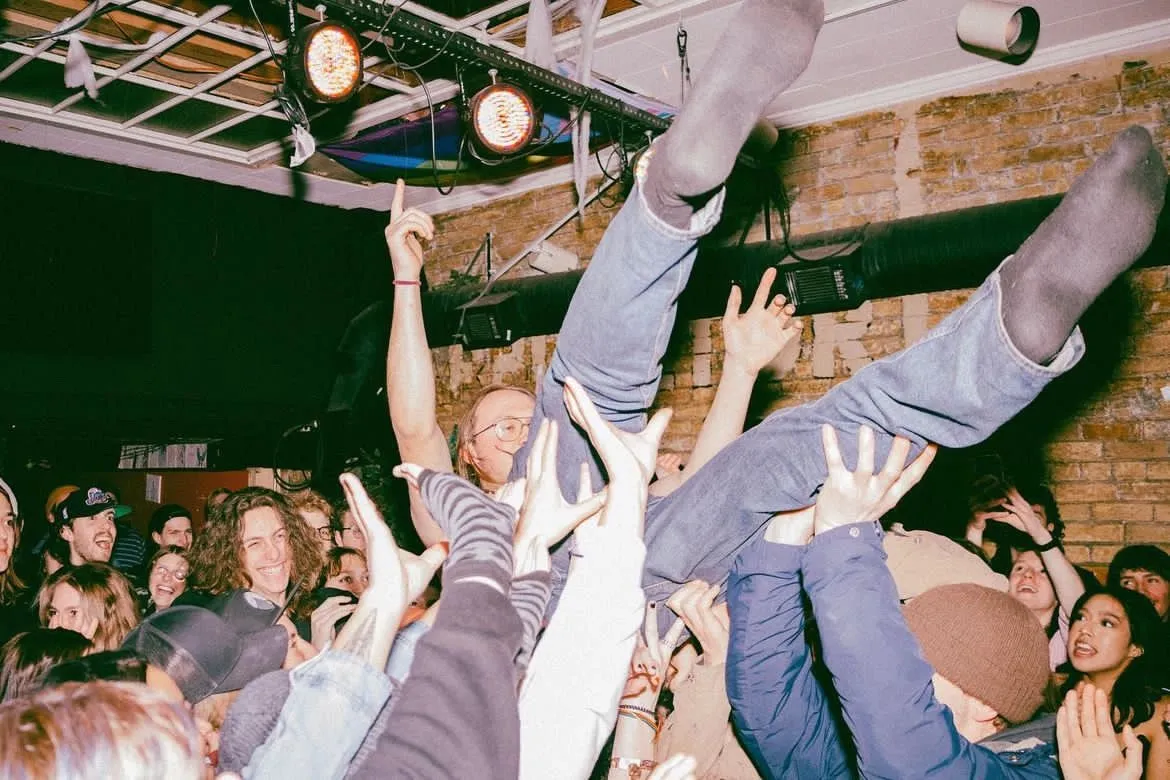
WhySound: A Home for DIY Music in Logan
Music Interviews
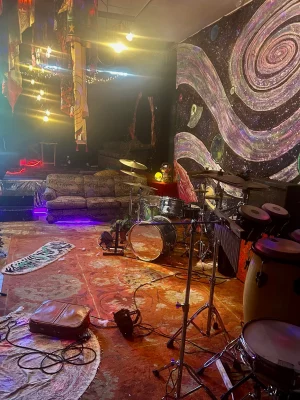
Green and red lights hang from the ceiling. The light reflects off faces, eyes closed almost reverently as they listen. A single lyric sung has the potential to destroy listeners and build them back up in one simultaneous moment. On any given night, the room pulses with eager bodies and the collective desperation to get as close to the stage as possible. Cigarette smoke wafts in from the open door, the band names written in chalk on the walls, staining the shirts of people leaning too heavily against it.
Since 2009, WhySound has been the center of the countercultural community in Logan. But it’s not just a place for those in the alternative scene or those on the outskirts of the predominant Latter-Day Saint culture. Its doors are open for any and all.
Sarah Sølberg, lead singer of the Logan-based band Hartebeest, explains that for many WhySound regulars, the venue fulfills many aspects of community that attending church does for others in the more traditional veins of Logan culture. “The thing I love about WhySound is that it works as a church alternative for people in town. We jokingly call it the ‘Church of WhySound,’” Sølberg says. “It’s not even so much a joke … you dress up and you go once a week and you meet all the same people. Music isn’t always worship, but it definitely can be. It’s so, so important to have that option—a community besides church in a town like this.”
“The thing I love about WhySound is that it works as a church alternative for people in town. We jokingly call it the ‘Church of WhySound.’”
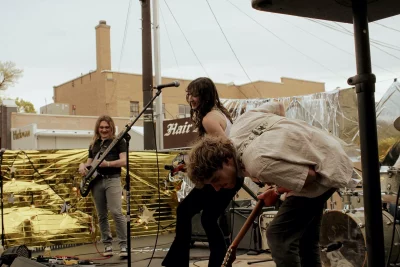
The community is what draws most to the venue—especially those who are post-religious. Hartebeest bassist Jaxton Winder’s eyes light up as he discusses the energy coursing through the venue. “I love that it brings everyone together and gives everyone a place to be accepted. It’s honestly a religion at this point,” Winder says. “It became another home to me. There was a time in my life where if I did not have a guitar and that creative outlet, I would not be here.”
The venue changed hands over the years before current owners Mowgli and Taylor Ross Wilson took over. Wilson and Mowgli, who each have their own musical projects—Little Barefoot and Guava Tree, respectively—run the business as a community space.
Wilson taps his knee to the music playing at Caffe Ibis, the sounds of the french press and the smell of freshly brewed coffee in the background. He sips from his mug as he speaks of the importance of the venue and his commitment to the local music scene.
“The space connects everyone. No one cares about politics, sexuality or gender. No one cares how talented you are.”
“It’s really important, especially in a state like Utah, where there’s religious overtones to pretty much everything,” Wilson says. “Having a safe space to go to where you’re not going to be judged is really nice. A place where you can express yourself.”
The venue seems to have a heartbeat of its own. It beats in time with the pounding of feet and thrashing heads in the crowd on any given night. “The space connects everyone,” Winder says. “No one cares about politics, sexuality or gender. No one cares how talented you are.”
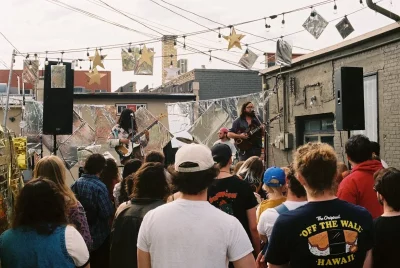
Winder says while it does bring people together who are not LDS, it is a place where everyone is welcome, so long as there is respect for the space and those who occupy it. “People are always kind and supportive. I’ve talked to plenty of people who are LDS, and there’s no qualms with that as long as they’re okay with me having my beliefs, my own spirituality or lack of religion,” he says.
Spencer Felix, an active member of the Logan music scene, has been attending shows and playing at WhySound since he was 16 years old. It was the first venue he ever went to.
“It’s a place where people who are post-religious can find connection and community,” Felix says. “It’s also a place where people who are still religious can go and share [that experience] as well.” The music at WhySound, Felix says, is “music that very few people on the planet will ever hear, but it still some of the most important music to me. Starting in my teenage years, it became a space where people who walked in to create and share their own original music could do so with no strings attached, at a place that’s quite literally a DIY space.”
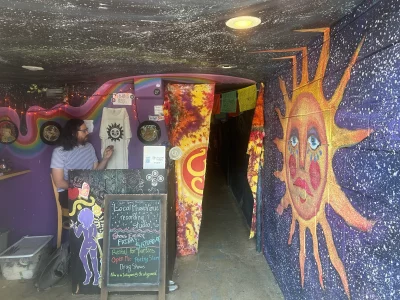
It’s a bridge between two clashing cultures that can’t be found outside the building. “The best regional example I can think of to compare it to is Kilby Court,” Felix says. “You look at Kilby Court, and it’s literally a garage, but to anybody who is interested in independent music or the alternative scene, it’s a holy garage. WhySound is Logan’s Kilby Court.”
WhySound is messy. It’s a place to be different, loud and true to yourself. No matter where you’re at in life, you can walk through the door, exchange $10 for a stamp on your hand and allow the music to revive you. You can find WhySound on 30 Federal Avenue, Logan, Utah, and information on Hartebeest on Instagram at @hartebeest.band.
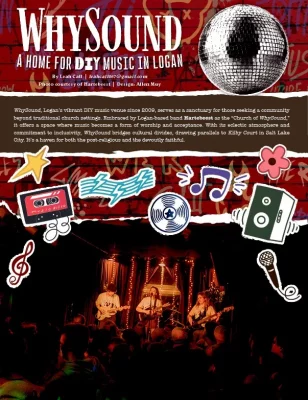 Graphic Designer: Allen Muy | @allenmuy.art
Graphic Designer: Allen Muy | @allenmuy.art
Walk us through how you created this layout. What inspired you when designing it?
I first started researching them by looking at Instagram and [WhySound’s] website. I looked at which bands have played there recently and found the vibe that the venue brings to the area. I mostly took inspiration [from] the inside of the place with the brick walls, hanging lights and art painted on the walls. I wanted to have a messy background that was full of noise so the text and photo stood out.
Tell us about your design background. How has your style evolved over time?
I started doing design [in] high school and it’s slowly evolved over time. I do enjoy how chaotic and creative I can be with SLUG Magazine as most of the work I do is pretty neat and clean.
What are some of your design inspirations or influences?
A lot of local artists that I have seen at markets and of course the designs that I have seen in the magazine. There’s also a bunch of Twitter and Instagram artists I follow, [and] I hope to achieve their level of style and art.
What does your graphic design process usually look like?
My process usually goes through a pretty standard [process] of research, sketches, two or three rough [drafts] and one intermediate proof before having a final piece. If short on time, I tend to just full send—get my first two ideas out and finalize one of them.
What is your favorite aspect of graphic design?
My favorite aspect of graphic design is being able find the things I’ve created out in the wild when I’m outside. I like seeing what I made be put into use, and be seen by other peoples’ eyes even though they don’t know who made the piece.
Read more local music interviews:
Contaminated Intellegence: Unbroken Brotherly Bonds
Into the Bonestorm
